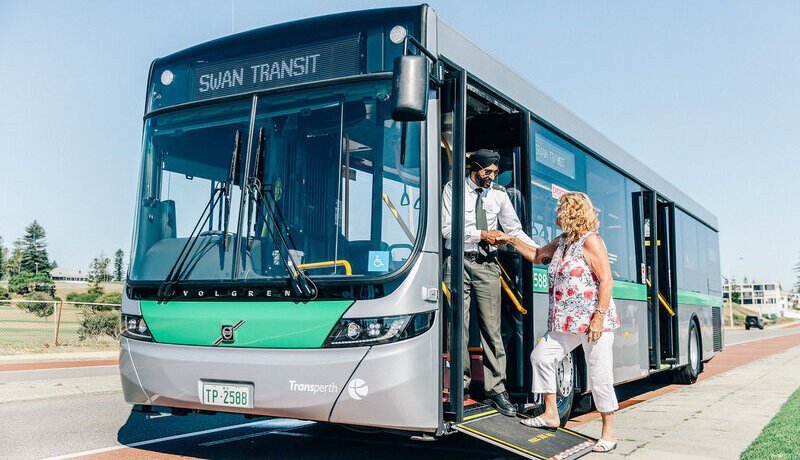The Driver Behavior and Safety Approach to Fleet Management
The sobering fact is that up to 90% of crashes are caused by driver error!
The good news is that every one of your employees, given the right training and incentives, can become safer and more cautious, every moment they get behind the wheel. This safer driving will make a huge positive impact on your fleet’s total costs – and your company’s bottom line.
In fact, driver safety translates into big benefits for vehicle operators, as reported by
customers who use GreenRoad’s Driver Behavior Solution:
- Up to 25% reduction in fuel costs
- 50% fewer incidents (average)
- 15% lower maintenance costs (average)
- Up to 33% reduction in vehicle emissions
- Improved regulatory compliance
- Improved control over scheduling
- Improved customer satisfaction
How to Create a Safety Culture?
The Right Approach: Unfreeze, Change, Refreeze
Change is difficult for everyone. So what’s the secret to creating a deep, permanent change in your organization’s safety culture? Because it’s one thing to talk about safety, but an entirely different story to achieve real engagement.
Change management pioneer Kurt Lewis describes a 3-step “Unfreeze-Change-Refreeze” model that has been used successfully by hundreds of companies to create meaningful change in employee behavior and corporate culture. This model describes the processes that fleets must internalize in order to transform their safety DNA.
Unfreeze: During the “Unfreeze” phase, you document the current situation, explain clearly why change is necessary and what benefits can be expected, and establish key performance indicators (KPIs) for measuring progress. To document the current safety situation, many companies deploy GreenRoad sensors and monitors monitors (whether via the installed GreenRoad Edge™ or the digitalised GreenRoad DRIVE™ app) in their vehicles before “powering up” its in-cab coaching capabilities. This gives them a clear “status quo” picture of fleet performance that they use to formulate safety goals and communicate the need.
Change: During the “Change” period, you introduce the program gradually across the organization in different phases:
- Orientation – After communicating the program’s goals, you carry out a driver education program, giving them thorough training in the new behaviors, values and attitudes that you expect from them.
- Technology training – In group forums and one-on-one coaching, you teach drivers how to use the technology platform to self-monitor, improve their driving skills and correct their driving. Baseline Safety Scores are calculated for each driver.
- Power-up – After a “grace period” to allow drivers to get used to the in-cab coaching system, the program goes live. Daily reports enable drivers to track their progress, with most drivers seeing an immediate improvement. This by itself is incentivizing and helps internalize the value of safe driving!
- Monitoring – Using the general reports and exception alerts generated by the system, management keeps close watch on the progress of each driver. Monetary rewards and public recognition can be used to incentivize improvement. One-on-one coaching and targeted training sessions can be used to address issues.
The combination of formal training (including both general defensive driving courses and more specific training regrading the technology) with real-time in-cab coaching and exception reporting has proven to be a highly effective platform for creating lasting change and reducing overall risky driving behaviors.
“The culture change that we achieved took time, constant engagement with the drivers and the workforce… We keep looking for more ways to engage them, and it’s working…” Jonathan Branchett, Bristow & Suter, UK
Refreeze: During the “Refreeze” period, management reinforces and supports the new behaviors to assure they become permanent. Monetary rewards, “friendly competitions” (such as GreenRoad’s Fleet Elite driver safety recognition award program) and other incentives are highly effective in keeping your drivers engaged in the program, and by that keeping them focused on safety.
“Last July, we created a WhatsApp group that included all of the personnel in our region. The M drivers saw the huge difference between their scores and those of the other cities in their region and within a month their scores came screaming down.” Mike Lees, Regional Director Middle East, Big Bus Tours
Technology in Service of Safety
“Bad habits are like a comfortable bed: easy to get into, but hard to get out of…” (traditional proverb)
The right technology platform transforms your safety program from a ruling “forced on” your drivers to a self-instruction program embraced by the entire team.
In order to deliver good results and to succeed in transforming the fleet’s safety culture, technological solutions must be easy to learn, easy to use, non-intrusive and clear.
For example, the GreenRoad solution uses “green/yellow/red” LED light indicators in the vehicle dashboard to give drivers real-time, “in-the-moment” feedback about their driving. When drivers see an unwavering green light, they feel proud of their driving and aim to “keep the green going.” When the indicators turn yellow or red, drivers know immediately to take more care, to be aware and to self-correct. The fact that yellow and green incidents are tracked and monitored by management increases the driver’s motivation to avoid them.
Over time, drivers learn to drive slower, to accelerate more gradually, to brake more cautiously and to anticipate traffic movements. These are the “green” safe driving habits that translate into driving styles that avoid crashes, save wear-and-tear, reduce gas consumption and stabilize auto insurance costs.
The GreenRoad system keeps track of all driving maneuvers performed during each journey, and calculates a running Safety Score for each driver. To further incentivize safe driving, management can use Safety Scores as the basis for monetary rewards and competitions.
Change in Action
“In a short time, my entire team began living and breathing the system, and when they started getting competitive around their scores, we began seeing dramatic results. We calculated an ROI period for the system of just 8 months…”
Rory Morgan, Head of Logistics Support, Iron Mountain – Western Europe
Helping Managers Use Their Time More Effectively
Many fleet managers worry that a fleet risk and safety program will overburden their schedules and resources. However, smart driver safety programs actually help managers use their time more effectively. For example, the GreenRoad system’s exception reporting allows you to focus on the areas that need the most attention with the most potential for improvement.
What is the best way to implement a safety program in your fleet?
Start Small and Targeted: Tie your safety program directly to your organization’s unique KPIs. Begin with just two of your key objectives. Once initiatives have been implemented and staff is comfortable, introduce two more. Make sure to set baselines and measure progress.
Stay Driver-Centric: The most effective safety programs give drivers responsibility for changing their own driving behaviors and the tools to do so. Provide ways for your drivers to self-correct and self-monitor. Make it clear that the fleet management software you’re using is all about safety and eco-driving empowerment, not about “big brother” driver and vehicle tracking. Use motivational incentives such as friendly competitions and monetary rewards for safest and/or most improved driving.
Spend Time Wisely: Target the areas that offer the most room for improvement. Which drivers constantly exceed speed limits, perform risky maneuvers and are involved in the most accidents? Train and coach these drivers in the specific areas that need improvement. Set automatic monitoring processes in place to reinforce behaviors to prevent lapses back into bad habits.
Pay Attention to Context: Safety systems with “visual heat mapping” make it easy for the fleet manager to identify particularly dangerous intersections or vehicle locations. They can also identify “hotspots” of vehicle idling, areas that are important to eliminate in order to make progress with your fuel management efforts. By giving your drivers special warnings and training, you can help them overcome these trouble spots, further enhancing your safety record and overall fleet maintenance performance.
“Since implementing GreenRoad, our driver safety risk has dropped by 60%, our fuel consumption is down by 4% and we have reduced the wear-and-tear on our vehicles – such as extending the life of our brakes.” Robert Andrew, Regional Director-South, Stagecoach UK Bus Operators.
How GreenRoad Can Help
With the help of GreenRoad’s technology, proven change management methodology and team of experts, you can make the changes that you need to imbed a safety culture into your fleet and make it last.
When the “processes” to be optimized are employee behaviors, success requires sensitivity, expertise and full organizational buy-in.
The GreenRoad Driver Behavior system incorporates real-time in-vehicle feedback, advanced fleet analytics, detailed reports and driver education tools. When coupled with our field-tested change management methodology, it helps you durably shift the company culture to align with fleet goals.





